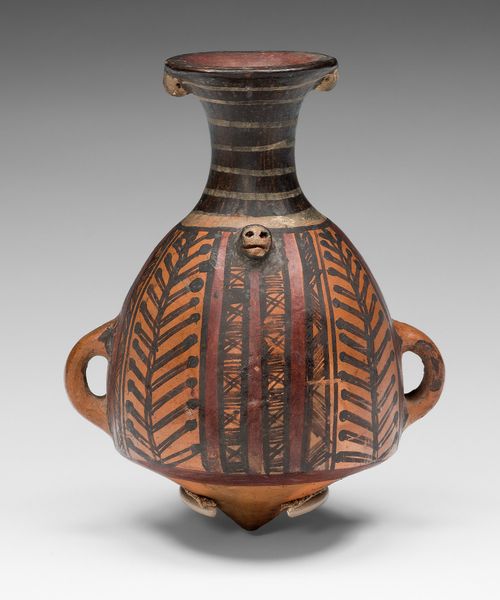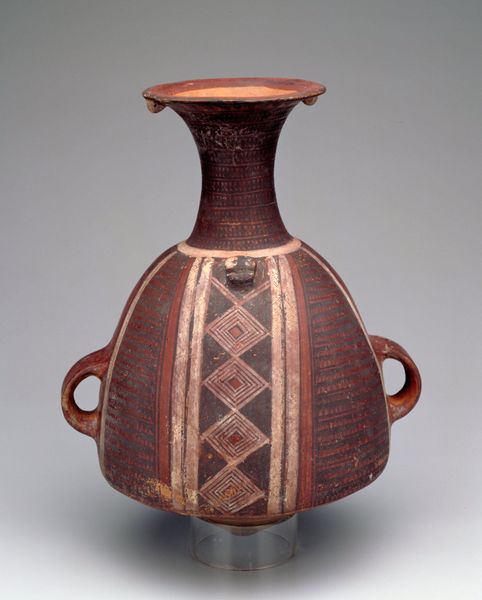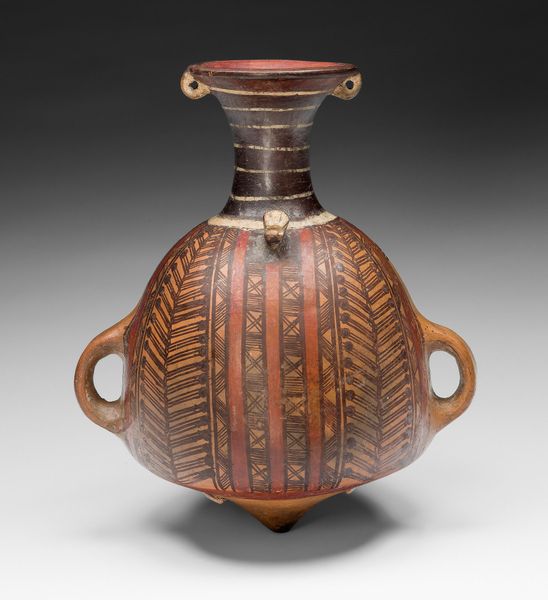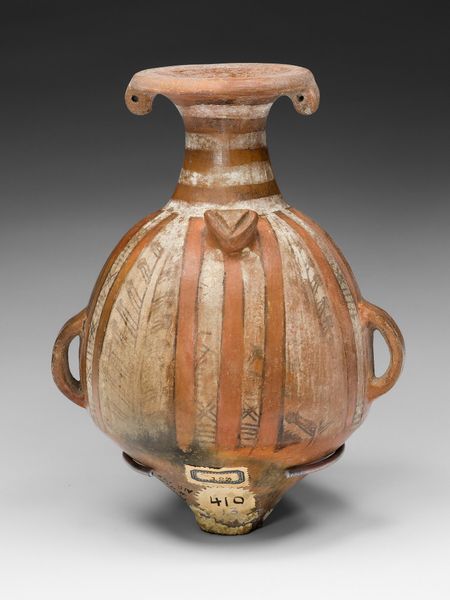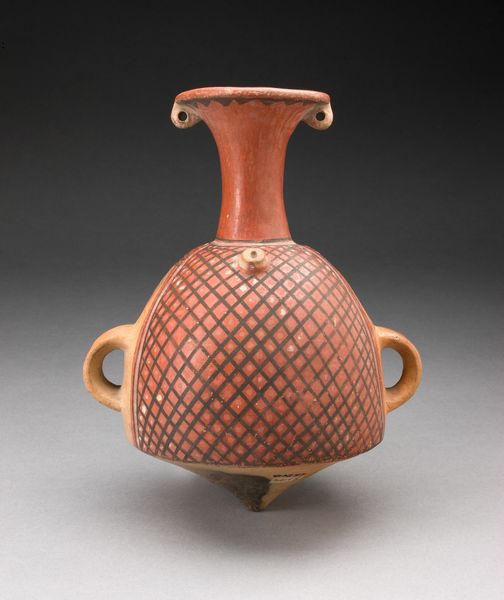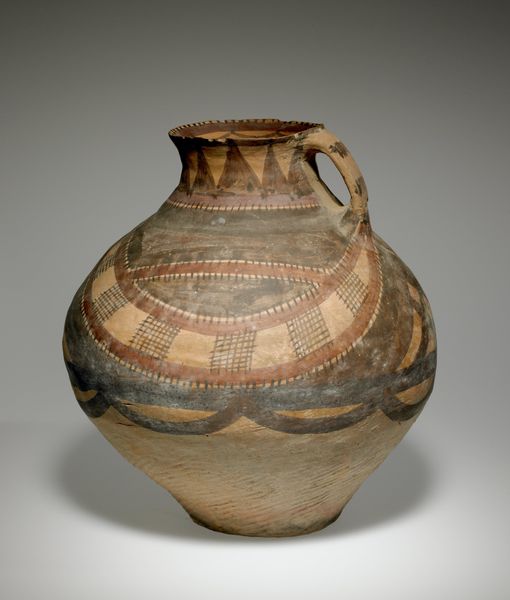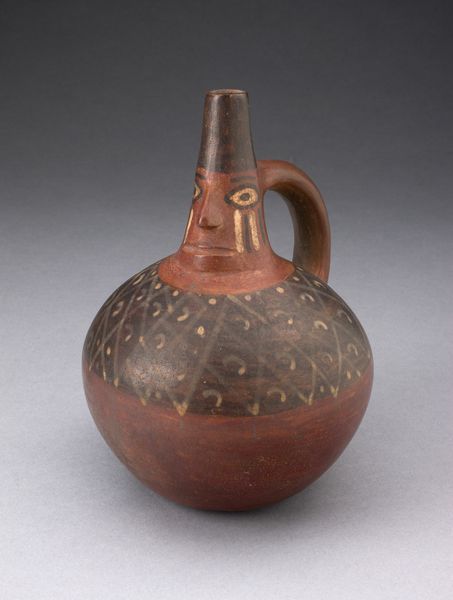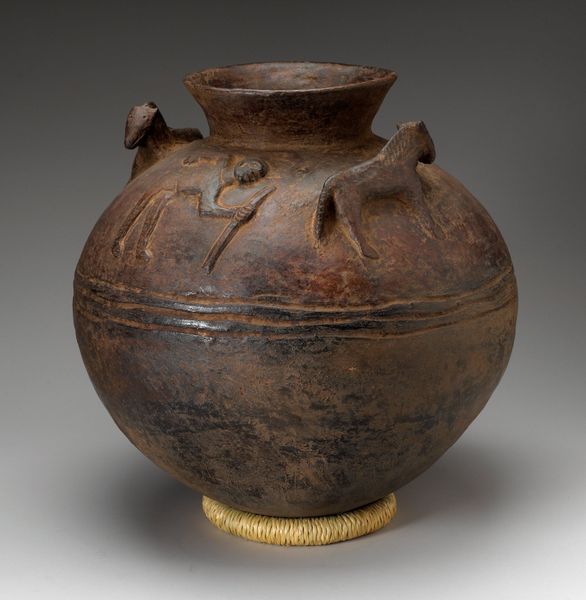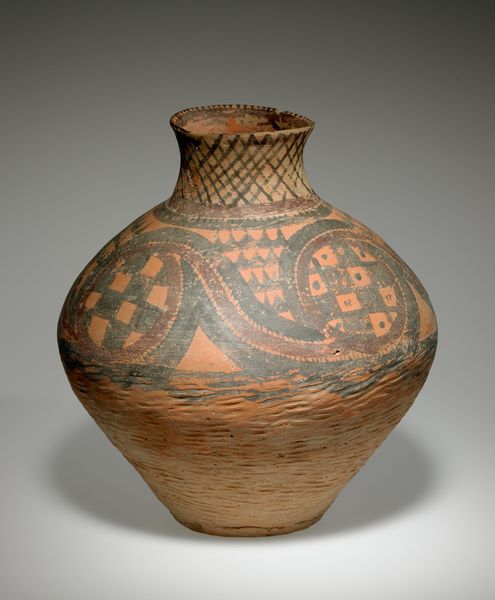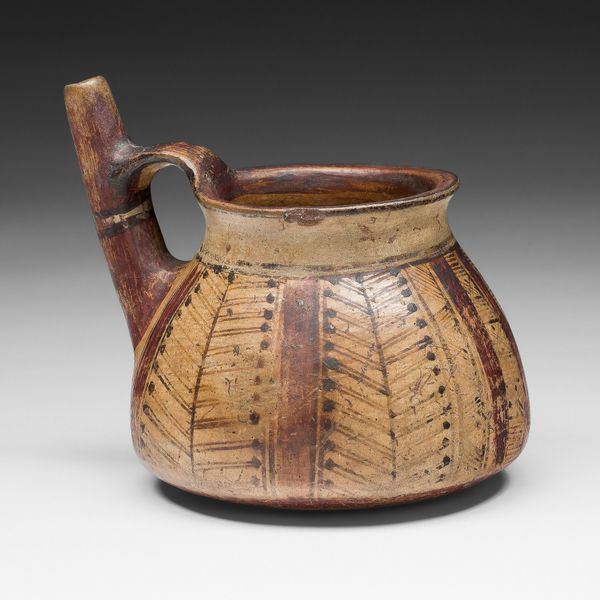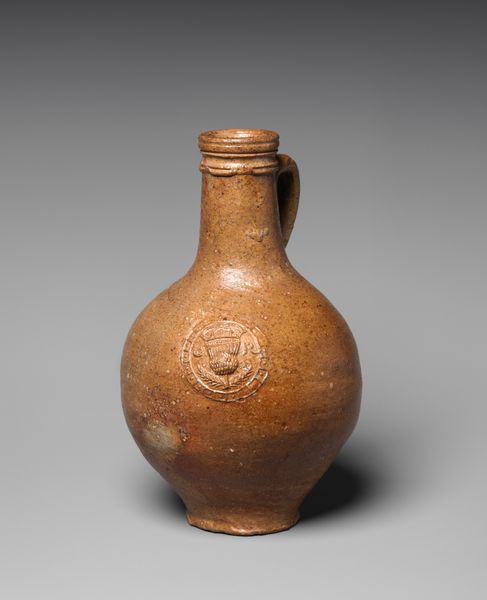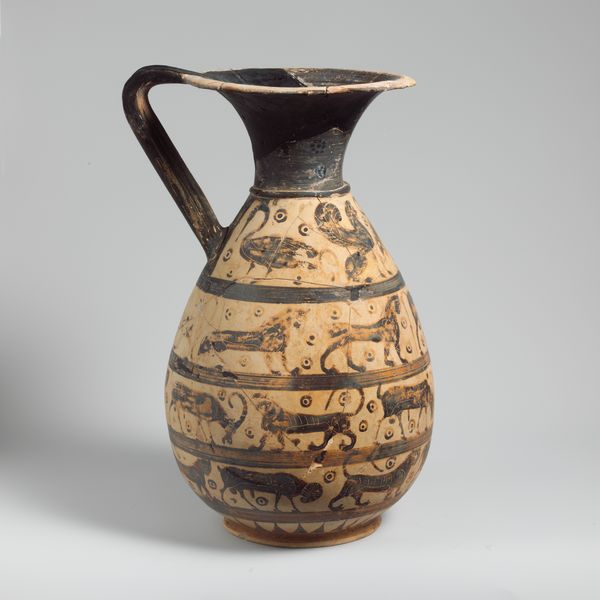
ceramic, terracotta
#
ceramic
#
geometric
#
ceramic
#
terracotta
#
indigenous-americas
Dimensions: 10.2 × 7.3 cm (4 × 3 7/8 in.)
Copyright: Public Domain
Curator: Standing before us is a remarkable artifact, a Miniature Ceremonial Vessel, often referred to as an Aryballos. It's attributed to the Inca culture, dating potentially from 1450 to 1532, and now residing here at the Art Institute of Chicago. Editor: It strikes me immediately as both functional and beautiful. The geometric patterns and the vessel’s shape are quite compelling; what can you tell us about the materials? It appears to be expertly crafted using terracotta or a similar ceramic. Curator: Indeed. Its terracotta composition is central to understanding its cultural function. This type of vessel would have been fired and potentially used for carrying liquids – possibly even chicha, a traditional fermented beverage used in Incan ceremonies and governance. Editor: Governance, really? So, even the clay and firing process played into some larger role in maintaining social order and distributing resources. How interesting. What's the significance of those stylized animal figures, do you think? Curator: It's speculated the small sculpted figure near the opening, is probably an animal of religious importance within the Inca belief system – perhaps a miniature, guardian figure watching over its precious contents. Its placement and style point to its ritual purpose. Editor: These vessels are usually not massive in scale, but you can imagine it requires immense labor. Considering everything is probably shaped by hand and fired traditionally, how this impacted daily lives is thought provoking. Was this pottery specialized, or produced for wider distribution? Curator: It would’ve involved specialized labor, indicating a stratified society capable of supporting artisans dedicated solely to their craft. In terms of its broader role, while objects like this were traded, they served key purposes as tools of authority, rather than simply trade goods. Editor: It makes you think of how intertwined the daily needs and practices were with the structures of society, how objects weren’t just ‘things’, but links within systems. Even something as "simple" as terracotta carries these meanings. Curator: Precisely. Seeing this piece reminds me of art’s deep connections with its historical setting, prompting us to consider the conditions and social dynamics that brought it into existence. Editor: Agreed. And I am reminded that understanding the methods behind crafting reveals not just the skill of the artist, but tells a compelling story of labor, materials and culture within society.
Comments
No comments
Be the first to comment and join the conversation on the ultimate creative platform.
